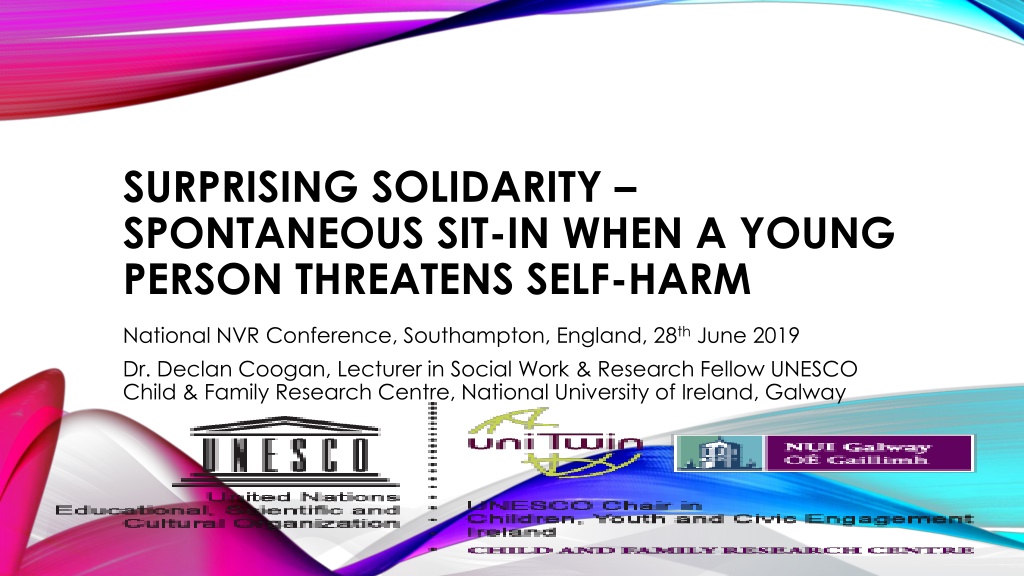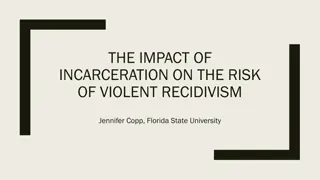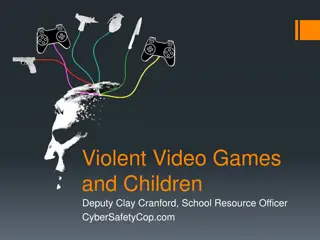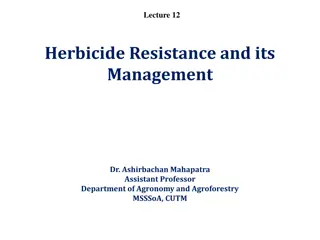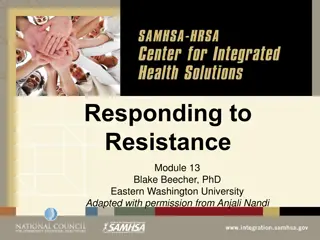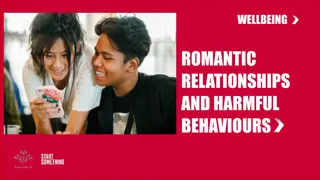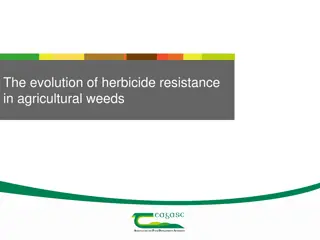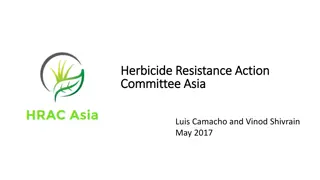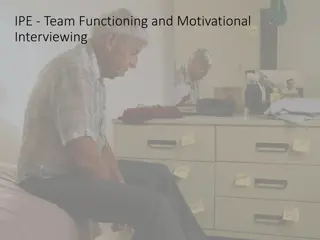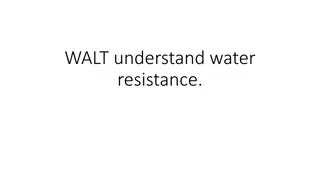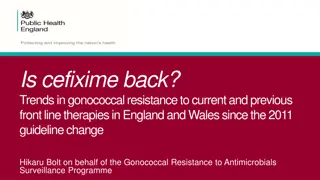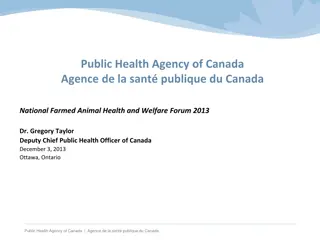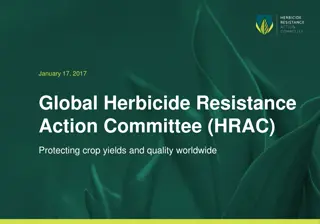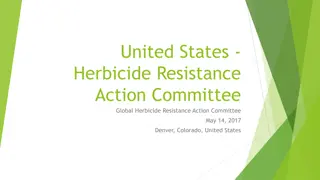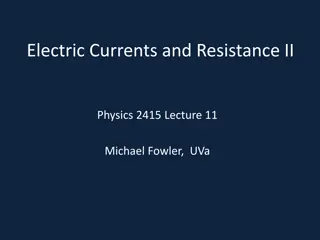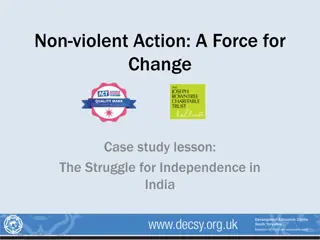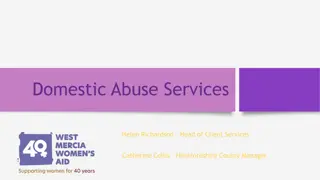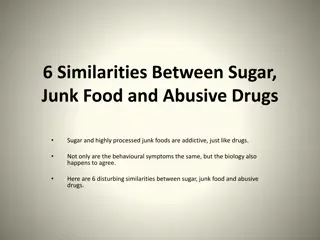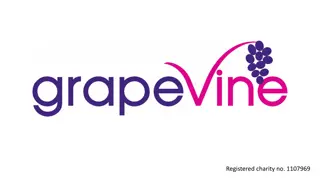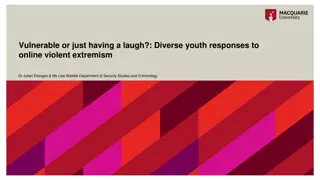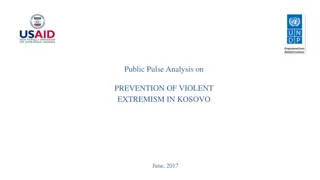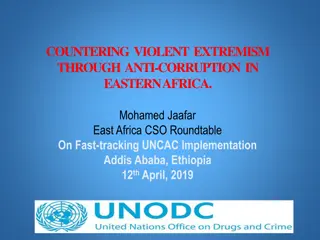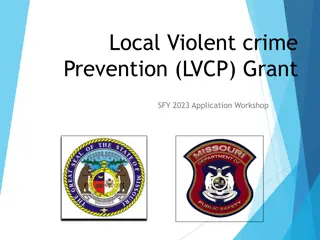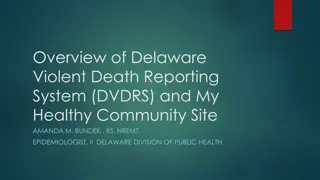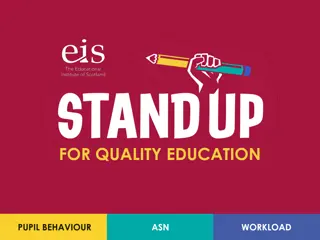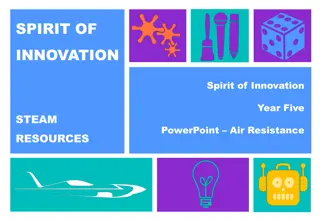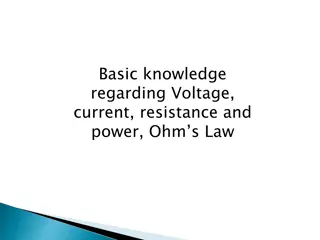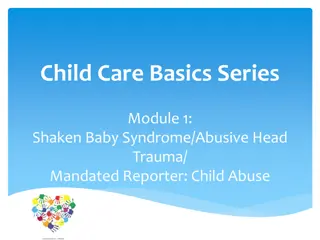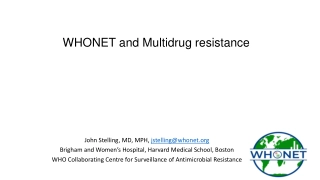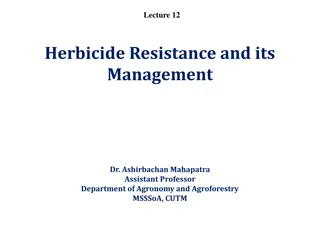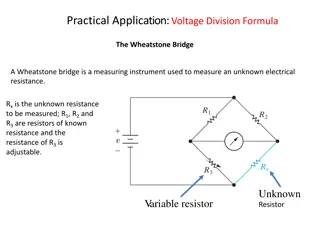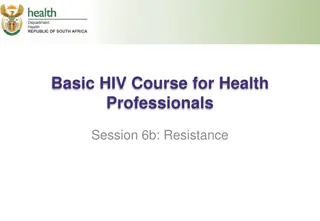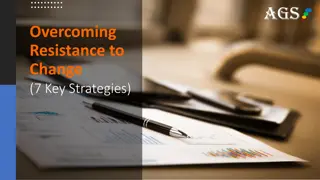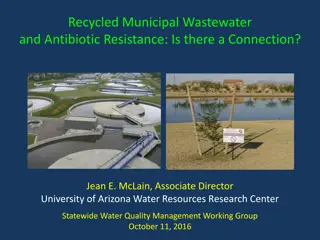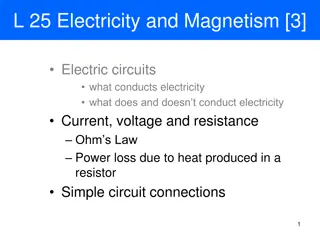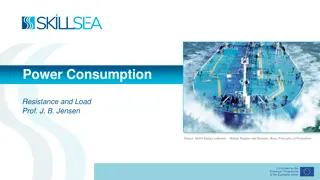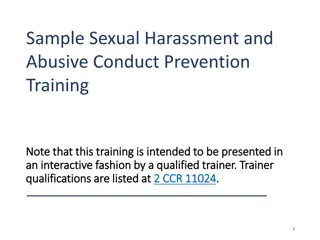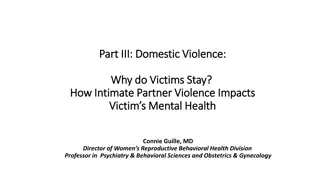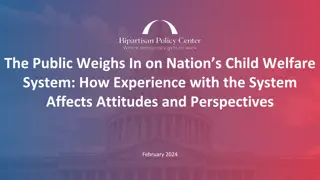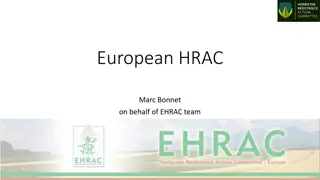Understanding Non-Violent Resistance in Addressing Abusive Behavior Towards Parents
Explore the intersection of mental health, abusive behavior in children towards parents, and the use of Non-Violent Resistance (NVR) as a framework for support. Dr. Declan Coogan shares insights on intervention models at a National NVR Conference in England, emphasizing the importance of standing against threats of self-harm with solidarity and strength. Learn from case examples, experiences, and cultural traditions promoting human rights and social justice.
Download Presentation

Please find below an Image/Link to download the presentation.
The content on the website is provided AS IS for your information and personal use only. It may not be sold, licensed, or shared on other websites without obtaining consent from the author. Download presentation by click this link. If you encounter any issues during the download, it is possible that the publisher has removed the file from their server.
E N D
Presentation Transcript
SURPRISING SOLIDARITY SPONTANEOUS SIT-IN WHEN A YOUNG PERSON THREATENS SELF-HARM National NVR Conference, Southampton, England, 28thJune 2019 Dr. Declan Coogan, Lecturer in Social Work & Research Fellow UNESCO Child & Family Research Centre, National University of Ireland, Galway
HOPES FOR TODAY... Ask the questions what is it and what happens to us when a child (under the age of 18 years old) has a diagnosis of mental health difficulties and uses abusive/ violent behaviour towards parents/ carers? Indicate the potential for the blurring the distinction between understanding and accepting abusive / violent behaviour used by some children towards parents/ carers Suggest can we see these problems as human rights concerns Demonstrate through a case example how Non Violent Resistance can give us the language and the strategies to stand up and stand strong with parents, carers and children against threats of self harm. What do social workers and others working with families in Ireland say about the NVR model of intervention? Learn from what I hear and experience here today....
DANIEL O CONNELL, MARY ROBINSON, & PRESIDENT OF IRELAND, MICHAEL D HIGGINS Cultural & historical traditions include commitment to human rights & social justice.
PERSONAL CONTEXT First encounters with challenging behaviour .. What happens when children use abusive/ violent behaviour towards parents/ carers?
PARENTS EXPERIENCES IN THE RCPV PROJECT 2013-15 Action research project partnership between universities & practitioners Involved 5 countries Bulgaria, England, Ireland, Spain, Sweden ; Aims of the project included Awareness-raising, Mapping knowledge & services ; Sharing knowledge & experiences, Developing & measuring the impact of 2 practitioner training programmes ( one was NVR). Free reports & resources at www.rcpv.eu and www.cpvireland.ie
PARENTS EXPERIENCES IN THE RCPV PROJECT 2013-15 ...... lots of shouting, smashing things, taking my bag, threatening to break things, threatening behaviour, physical violence, smashing various parts of the house and being very out of control. This just got worse and worse. All the boundaries I had been using before just were not working (Jane, mother, England).
PARENTS EXPERIENCES IN THE RCPV PROJECT 2013-15 It s very distressing for everybody and it just stresses the other children in the family .. it s very wearing, as a parent, to constantly be very conscious of what you re saying, how you re saying it, your tone of voice, and constantly being aware that situations around may influence his outbursts, that s very wearing, very tiring (Deborah, foster mother, England).
CASE EXAMPLES ARE NOT AVAILABLE ON HANDOUTS
What does it do to us? What dilemmas do we have? How do we respond?
PRACTICE DILEMMAS.? How can I resist the impulse towards a quick and easy solution? How can I foster resilience and coping skills? In other words, how can I anchor myself & keep a clear focus?
OUR ANCHORS? 4 POINTS TO CONSIDER 1. How can we understand the problems of children using abusive and/ or violent behaviour towards parents/ carers ? 2. Where do we stand when we hear about these problems? 3. What are the common factors among families who live with this problem? 4. What are the core principles of responding to violent and abusive behaviour?
DIFFICULTIES IN UNDERSTANDING THE PROBLEM? Different definitions are used.... There is a huge lack of training and awareness about CPVA among practitioners who work with children and families (Wilcox et al, 2015) Raising the topic of CPVA is difficult for practitioners within disciplines that seek to counteract demonisation of young people (Selwyn & Meakings, 2015)
1. HOW CAN WE UNDERSTAND THE PROBLEM? Name it. Start with a clear definition.... Child to parent violence and abuse is an abuse of power through which a child or adolescent (under the age of 18 years) coerces, controls or dominates parents/ carers See Coogan, 2018a, b; Coogan, 2016a, b; Wilcox et al, 2015; Lauster et al 2014; Coogan & Lauster 2014b; Holt 2013; Coogan 2012; Tew and Nixon 2010.
A CLEAR DEFINITION? IT INVOLVES FEAR & ABUSE OF POWER What is the difference between children testing boundaries and child to parent violence and abuse? The issues of power and fear clarify the difference. If parents feel they must adapt their behaviour due to threats or use of violence/ abuse by a child, then there is child to parent violence and abuse. (Wilcox 2012; Coogan, 2016a, b; Coogan, 2018a, b).
HOW DOES CHILD TO PARENT VIOLENCE AND ABUSE AFFECT PARENTS? Feelings of isolation, shame and self-blame Parents fear blame from practitioners Practitioners may not ask about it or not respond in helpful ways. (Sheehan, M 1997, Selwyn & Meakings, 2015; Lauster et al 2014; Holt 2013; Omer 2004; Gallagher 2004; Edenborough et al 2008).
IT CAN BE VERY HARD TO SEE. Sometimes labels (e.g. ADHD; generalised anxiety disorder; attachment disorder) distract us from what is really going on. (Gallagher 2004; Tew & Nixon 2010; Coogan 2012, 2016b; Holt 2013, Wilcox et al, 2015; Coogan, 2018a)
IT CAN BE VERY HARD TO SEE. It can be difficult for us to see that a child can be both a victim and a perpetrator of abuse. (Gallagher 2004; Tew & Nixon 2010; Coogan 2012, 2016a, b; Holt 2013, Wilcox et al, 2015; Coogan, 2018a,b) So how can we keep a clear focus on what is going on and what might be helpful?
PAUSE POINT....REVIEW & WHAT IS NEXT? Where am I coming from ? What do we see/ hear? Case example How do we understand CPVA? How can we see it? Abusive & Violent Behaviour as Human Rights questions First Principles & Common Factors? NVR, the Sit-In & self-harm threats What do practitioners in Ireland say? Some questions....
HELPING US TO CLEARLY SEE THE PROBLEM- CPVA AS A HUMAN RIGHTS ISSUE?
CPVA AS A HUMAN RIGHTS ISSUE? everyone has the right to life, liberty and security of person (art. 3) The Universal Declaration of Human Rights (1948)
CPVA AS A HUMAN RIGHTS ISSUE? no one should be subjected to torture or to cruel, inhuman or degrading treatment or punishment (art. 5). The Universal Declaration of Human Rights (1948)
CPVA AS A HUMAN RIGHTS ISSUE Child to parent violence and abuse infringes the rights of parents and of children. We are challenged to take a clear position against these problems (not against the child) and to empower people to change.
RESPONDING TO CPVA WITH NON-VIOLENT RESISTANCE. This is where we stand ..
ANCHOR POINT 2. WHERE DO WE STAND? CPVA is a human rights issue Explanations, even good ones, are not excuses (See Gallagher, E 2004b). The idea that any behaviour is inevitable, uncontrollable, or excusable by gender, diagnosis or past experience is simplistic, discriminatory and unhelpful. (Gallagher, E 2004b).
ANCHOR POINT 2. WHERE DO WE STAND? A zero tolerance towards the use of any and all abusive and/ or violent behaviour by anyone Understanding does not mean accepting abuse/ violence.
WHERE DO WE STAND? NON VIOLENT RESISTANCE INTERVENTION MODEL IT IS ABOUT INFLUENCE, NOT CONTROL.... NVR aims at positively influencing the interactions between the child using abusive/ violent behaviour and the systems within which she/ he lives, moves & relates
CASE EXAMPLE Case examples are not available on handouts....
1. UNDERSTANDING; 2. WHERE DO WE STAND; ANCHOR POINT 3. WHAT ARE THE COMMON FACTORS AMONG FAMILIES? By the way, a note of caution..... Family composition? Family socio-economic status? Gender? Culture? Family experiences of domestic violence/ abuse? Juvenile Offending Behaviour? Attachment difficulties/ disorders Learning difficulties? School difficulties? Mental health concerns/ diagnosis? Parental or child alcohol/ drug abuse? Experiences of child abuse and neglect?
IT SEEMS. But practice experience & research suggests NONE OF THE ABOVE
PARENTS WHO FEEL ISOLATED & ALONE, WITHOUT SUPPORT.
RELATIONSHIP OR INTERACTION HABITS WITH ESCALATION CYCLES THAT LEAD TO ABUSE/ VIOLENCE
FEAR OF THEIR CHILD, HELPLESSNESS, HOPELESSNESS
PAUSE FOR THOUGHT IMPLICATIONS FOR PRACTICE? If fear & helplessness, Isolation and relationship habits with escalation cycles are common among some families we work with, what are the implications of these common factors for what we do next when children become violent?
IMPLICATIONS? WE CAN HELP BY.... Identify different habits/ patterns of relationship and interaction change some, reinforce others (strengths-based practice) Reduce social isolation by activating social networks Making clear where we stand there is never any excuse for abusive behaviour Inviting parents/ carers to adopt a similar stance & commit to non- violence Identifying and providing concrete skills and practical support that restore confidence & competence For example- de-escalate; press the pause button; increase positive parental presence
1. UNDERSTANDING; 2. WHERE DO WE STAND; 3. WHAT ARE THE COMMON FACTORS AMONG FAMILIES; ANCHOR POINT 4. SOME CORE PRINCIPLES? With NVR, the focus is especially on adult responses to the child s behaviour. Through NVR, adults use the power of school and parental support and of public opinion (directly involving family, students, friends, wider school community).
NON VIOLENT RESISTANCE STARTING POINTS. Unacceptable power base of using sanctions/ consequences is abandoned. Through implementing NVR, adults develop skills to use instead the positive power of authoritative presence, social support & determined resistance to the child s abusive and/ or violent behaviours.
CASE EXAMPLE: POSITIVE CHANGES, BUT WHAT IF? Not available on handouts
WHAT DO PRACTITIONERS IN IRELAND SAY ABOUT NON- VIOLENT RESISTANCE ?(COOGAN, 2016A), LISTENING TO THE VOICES OF PRACTITIONERS .; COOGAN 2018.)
CHILD TO PARENT VIOLENCE AN EXPLORATION OF NON-VIOLENT RESISTANCE (COOGAN, 2016A) Action research & constructivist grounded theory project: 3 Research Questions: How do child and family practitioners assess, engage with and intervene with CPV? What is the response of practitioners to the adapted NVR programme? What is the effect, if any, of the NVR training on practitioner self- efficacy?
CHILD TO PARENT VIOLENCE AN EXPLORATION OF NON-VIOLENT RESISTANCE (COOGAN, 2016A) Development of NVR 2 day training programme Ethical approval (NUI Galway) Pilot training programme Full implementation of training, data collection & analysis.
CHILD TO PARENT VIOLENCE AN EXPLORATION OF NON VIOLENT RESISTANCE. Quantitative Questionnaires. Pre (T1); Post (T2); Follow Up (T3). Family Support Practitioners in Dublin city; Multi-agency family support group in west of Ireland Child protection social workers in west of Ireland. Wait-list control group (domestic violence service). Components of Practitioner Self-Efficacy: Knowledge & Skill; Understanding; Confidence; Conversations.
INTERVENTION WITH CHILD TO PARENT VIOLENCE AN EXPLORATION OF NON VIOLENT RESISTANCE. Qualitative interviews post training. 19 in total: voluntary agencies = 15; statutory agency = 4. Grounded theory method of data analysis & interpretation support; players ; empowerment.
WHAT DID PRACTITIONERS IN IRELAND SAY ABOUT NVR? (COOGAN, 2016A) Participants responses to the 2 day NVR training programme indicated that their sense of self-efficacy significantly increased: ++Awareness & understanding of CPV ++Confidence & skill in responding to CPV Practitioners reported that NVR had positive outcomes when implemented by parents with whom they worked
WHAT DID PRACTITIONERS IN IRELAND SAY ABOUT NVR? (COOGAN, 2016A) I think NVR looks like a very good approach... where parents really have lost, you know, their own sense of their own power and are feeling a sense of helplessness and hopelessness around it.... Sean , Family Support Centre, Voluntary Service.
WHAT DID PRACTITIONERS IN IRELAND SAY ABOUT NVR? (COOGAN, 2016A) So I think, the model, the steps were quite clear and I liked that about it. It was kind of something that you could get your head round and, and take a parent through. Cian , Child Protection Social Worker
WHAT DID PRACTITIONERS IN IRELAND SAY ABOUT NVR? (COOGAN, 2016A) That was one of the main things that stood out for me about it, that it was more kind of co-operative and open and with dialogue .People feel more listened to Kate , Child Protection Social Worker.
